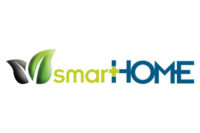
New construction takes a lot of the glory when it comes to showcasing highly sustainable elements, but managers, owners and operators of existing facilities can implement new systems without taking a huge bite out of the budget. Such systems include energy-efficient HVAC, lighting and controls, and water solutions to make the space more sustainable through an approach called Energy Savings Performance Contracting (ESPC).
By taking a holistic approach of a building and its systems, facility managers are better able to plan for upgrades that not only help the facility perform in a more efficient manner but also help to absorb the costs over a longer period of time.
There are many aspects of ESPC that make it a viable option for upgrading facilities without breaking the bank. First, many upfront costs can be absorbed by grants and tax credits that are available for facility owners and managers who use the money for energy-efficiency renovations. Second, there are qualified Energy Savings Companies (ESCO) and contractors who will guarantee that the specified energy savings and other forecasted operational savings become realized. And finally, a major element of an Energy Savings Performance Contract ensures that the overall project is funded over time through ongoing energy and operational cost reductions.
Remote Monitoring
In addition to the technologies that make a facility more sustainable and operate more efficiently, there is also new technology that enables ongoing remote monitoring of a building’s systems. Remote monitoring is provided by taking full advantage of an existing building’s automation system through the addition of customized programming, communications and protocols. This technology can pinpoint issues and consequently solutions can be created that reduce these inefficiencies, which is additional money saved.Remote monitoring uses the information available from the field and adds tailored decision making. These are determined through software, negating the need for multiple individuals to continuously monitor thousands of points of information. Remote monitoring tracks, assesses and acts on critical facility systems every minute of every day. Remote monitoring also provides the means to prevent minor events from turning into major situations, and acts as virtual and expandable eyes and ears to facility systems.
Remote monitoring enables facility technologies (e.g., direct digital control systems) to communicate when they are not operating within set environmental or energy limits. The system experts then view and correct the facility systems through a Web interface. Reporting mechanisms gather data and organize it. Reports are customized for each facility so that energy management professionals can succinctly analyze and determine next steps.
Remote Diagnosis
Utilizing the same hardware and communications network as remote monitoring, remote diagnostics is one method of quick and efficient response. This is an offsite process that checks, addresses if possible, and assists where needed, the assessment of system issues within a facility. This enables onsite resources to be focused on current projects and tasks, and negates the necessity of specialized onsite resources for this purpose. Remote diagnosis is an effective first response commonly used to assist onsite facility engineers and mobile-based mechanics diagnose issues remotely while onsite staff physically addresses equipment or systems issues.Building Performance
Much in the same way that commissioning starts at the beginning of design, so does the implementation of the measurement and verification (M&V) process. M&V is the critical management tool that compares predicted building performance with actual performance. One of the biggest risks associated with achieving the status of “living building” is missing real-time opportunities to modify occupant behaviors to help tune the building. Firms can limit this risk by working with the design team, facility manager and building tenants to establish a minute-by-minute baseline energy and water use target for the building. Through real-time tracking of how the building is performing and dashboarding the building’s performance against the net-zero goal (by tenant, by system, by floor, etc.) this information will be used with the facility manager, building occupants and design team to adjust the performance of the building. The measurement and verification process with building performance monitoring and perpetual real-time intervention helps to ensure the building has a healthy and highly productive environment, and that it is operating as a net-zero facility.The combination of ESPC, remote monitoring, and measurement and verification helps fund sustainable projects and then ensures the performance and energy savings for the long-term life cycle of a facility.






